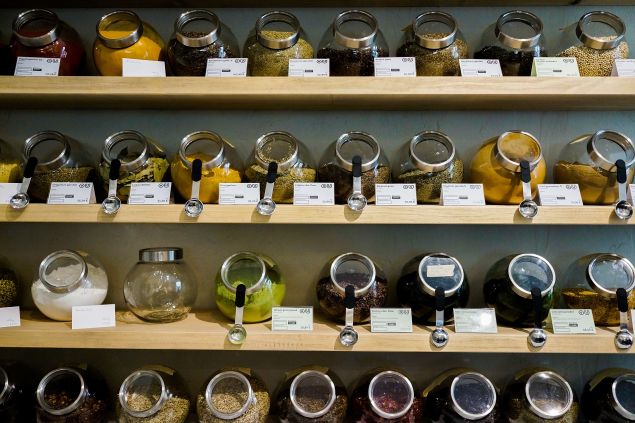
Maybe your kitchen cupboards are not stocked with the healthiest of foods, but I bet your spice rack probably is. Take a look at the various spices it contains and you’ll be staring at some of the most powerful and effective secret weapons known that can fight against conditions such as inflammation, heart disease, cancer, and more.
These often underused aromatic substances used for food flavoring, are very easy to take advantage of and have been shown in studies suggesting their health potential. Next time you’re getting ready to shake salt or dollop butter onto food, stop and consider how those substances are contributing to heart disease and high blood pressure. Instead, opt to choose a spice giving a unique and flavorful twist on food using their phytonutrient and antioxidant compounds as disease-fighting warriors within your body.
- Curry Powder or Tumeric
Curry powder contains the starring compound turmeric a powerful anti-inflammatory more potent than vitamin C or E. Tumeric contains the phytochemical curcumin which one study showed that it inhibits growth of certain breast cancer cells with other research suggesting it may also protect against stomach and pancreatic cancers.
How to use it:
Try curry powder or turmeric on vegetables such as Brussel sprouts, on brown rice or quinoa, or sprinkle onto chicken noodle soup.
- Oregano
One teaspoon of this spice contains six micrograms of bone-building vitamin K but also has the same amount of antioxidants as three cups of spinach.
How to use it:
Sprinkle oregano onto spaghetti sauce, soups, or salad dressings for some additional flavor.
- Coriander
This spice comes from seeds from cilantro. It is believed to have anti-inflammatory, antibacterial, anti-allergic, and antioxidant properties. It also has a high phytonutrient and flavonoid content making it an exceptional spice not to overlook.
How to use it:
Add to meatballs, meatloaf, casseroles, or sprinkled onto a soup, stew or salad.
- Paprika
This familiar spice is made from a number of ground, dried red peppers such as red bell peppers or chili peppers. What gives peppers their “hot” reputation is a phytochemical called capsaicin. Paprika contains capsaicin but without the “kick” peppers provide. Paprika has been known for reducing the risk of heart disease, and alleviating gas, increasing immunity, and reducing cancer cell survival.
How to use it:
Sprinkle over scrambled eggs or grilled shrimp, add to tomato or spaghetti sauce or salsa, or use as a rub for meats.
- Cumin
Just one tablespoon of this aromatic spice provides 22 percent of your daily requirement for iron, a mineral keeping your energy levels high and strengthening your immune system. It may also fight many types of cancer and improve digestion, headaches, and skin disease.
How to use it:
Cumin goes great with lentil soup, on top of broiled salmon, on topped onto whole wheat pasta.
- Cinnamon
Antioxidant compounds found in this popular spice helps to prevent blood sugar spikes and dips by improving the way cells metabolize glucose. Research has shown that eating half a teaspoon of cinnamon daily may reduce risk factors for diabetes and Alzheimer’s disease.
How to use it:
Cinnamon’s versatility makes it good for adding to any dessert, on top of cooked fruit, sprinkled onto oatmeal, added to a smoothie or stirred into chili.
- Ginger
Best known for settling an upset stomach, this power anti-inflammatory also helps arthritis inflammation and may protect against colorectal and ovarian cancer. Your immune system will get a boost from ginger providing added protection against infections.
How to use it:
This goes great topped onto acorn squash, blended into juices or added to stir-fries.
- Cayenne pepper
This red hot spice contains the compound capsaicin giving cayenne pepper the ability to speed up your metabolism providing that extra calorie and fat burn. A study at Purdue University found that people who added a half teaspoon of cayenne pepper to a meal ate 70 fewer calories at their next meal and reduced their cravings for fatty and salty foods.
How to use it:
Sprinkle cayenne pepper onto hummus, sprinkle onto soups or add a few shakes onto air-popped popcorn.
Dr. Samadi is a board-certified urologic oncologist trained in open and traditional and laparoscopic surgery and is an expert in robotic prostate surgery. He is chairman of urology, chief of robotic surgery at Lenox Hill Hospital and professor of urology at Hofstra North Shore-LIJ School of Medicine. He is a medical correspondent for the Fox News Channel’s Medical A-Team Learn more at roboticoncology.com. Visit Dr. Samadi’s blog at SamadiMD.com. Follow Dr. Samadi on Twitter, Instagram, Pintrest and Facebook.

